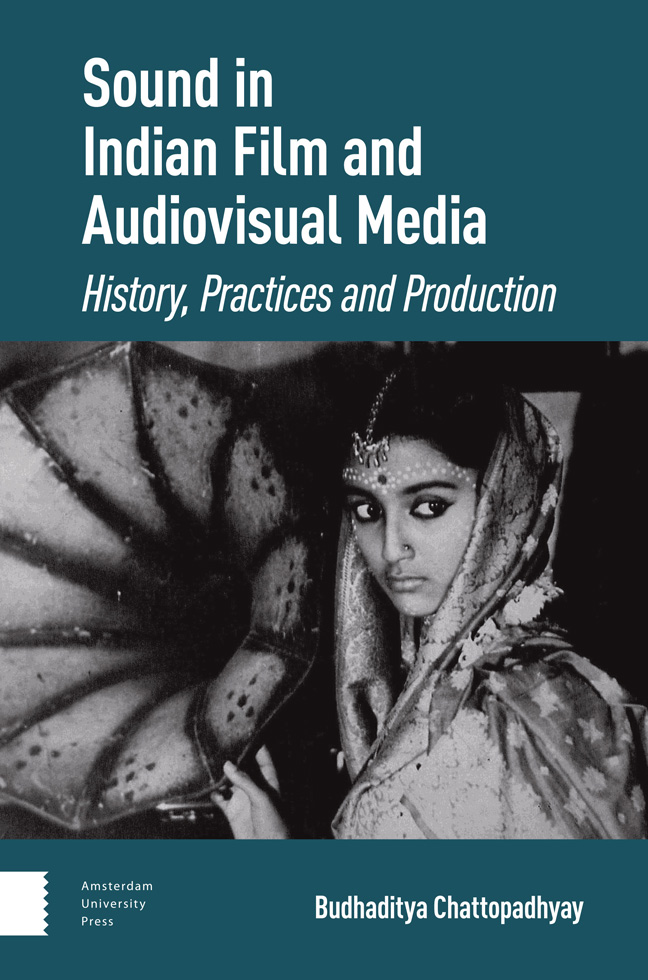Book contents
- Frontmatter
- Contents
- Acknowledgements
- 1 Introduction
- 2 The Technological Frameworks
- 3 Direct Sound and Early Talkies
- 4 Sound of the Golden Age
- 5 Tracing the Sound in Satyajit Ray’s Film-works
- 6 Popular Films from the Dubbing Era
- 7 Parallel Sounds, Radical Listening – Part I
- 8 Sholay, Stereo Sound and the Auditory Spectacle
- 9 The Advent of Digital Sync Sound
- 10 The Surround Revolution
- 11 Sound in the Audiovisual Media Arts
- 12 Parallel Sounds, Radical Listening – Part II
- 13 A Concluding Voiceover
- Bibliography
- Filmography
- Index
6 - Popular Films from the Dubbing Era
Published online by Cambridge University Press: 20 February 2024
- Frontmatter
- Contents
- Acknowledgements
- 1 Introduction
- 2 The Technological Frameworks
- 3 Direct Sound and Early Talkies
- 4 Sound of the Golden Age
- 5 Tracing the Sound in Satyajit Ray’s Film-works
- 6 Popular Films from the Dubbing Era
- 7 Parallel Sounds, Radical Listening – Part I
- 8 Sholay, Stereo Sound and the Auditory Spectacle
- 9 The Advent of Digital Sync Sound
- 10 The Surround Revolution
- 11 Sound in the Audiovisual Media Arts
- 12 Parallel Sounds, Radical Listening – Part II
- 13 A Concluding Voiceover
- Bibliography
- Filmography
- Index
Summary
Abstract: In the sixth chapter, I discuss the filmmaking period from roughly the 1960s to the late 1990s in India known as the ‘dubbing era’. Many representative popular films from this era are examined to investigate how the asynchronous practices of sound in this period incorporated a technologically informed approach, using analogue sound processing with expressionistic and melodramatic overtones. Following critical analysis of sound from several films and drawing supporting evidence from the conversations with veteran practitioners, the chapter demonstrates how magnetic recording and dubbing rendered the sound of this period as something spectacular, with extravagant song-and-dance routines in foreign locations packed with studio-manipulated, synthetic effects. Add to this a deliberate lack of site-specific sounds, and this practice triggered a cinematic experience of emotive tension and affective stimulation.
Keywords: dubbing, ADR, Indian cinema, playback system, song-and-dance routines
Loop Dubbing
From the late 1940s onwards to the digital era, sound in Indian cinema was rarely recorded on location. Dubbing and re-recording were deployed instead as the dominant modes of sound practice in mainstream Indian films; the film soundtrack was mostly created (or re-created) in the studio. Actors would recite and re-record their lines as their images appeared on the studio screen in a process known as ‘loop dubbing’, via ‘looping’, or ADR (Automatic Dialogue Replacement). Background music, along with lavish song and dance sequences at regular intervals followed this process. Various sound effects, or Foley, were entirely made in a post-synchronization process within the close confines of a studio and added later as the secondary or tertiary layers of the sound organization.
The use of ADR in Indian cinema became a regular practice from the 1950s onwards with the arrival of the Arriflex 2C and Arriflex 3 cameras, which required the soundproof cover called ‘blimp’. This distracting camera noise always entered the pilot track recorded on location and it required all the sound components, including character dialogues and synchronized sound effects, to be re-created in the studio. Eventually, this practice of loop dubbing became the standard in Indian films. As dubbing emerged alongside the standardization of analogue magnetic recording and mixing, it was facilitated by multi-track re-recording in the studio. The following phase of sound production in Indian cinema was shaped towards what is known as the ‘dubbing era’ (roughly between the 1950s and 1990s).
- Type
- Chapter
- Information
- Sound in Indian Film and Audiovisual MediaHistory, Practices and Production, pp. 109 - 122Publisher: Amsterdam University PressPrint publication year: 2023



